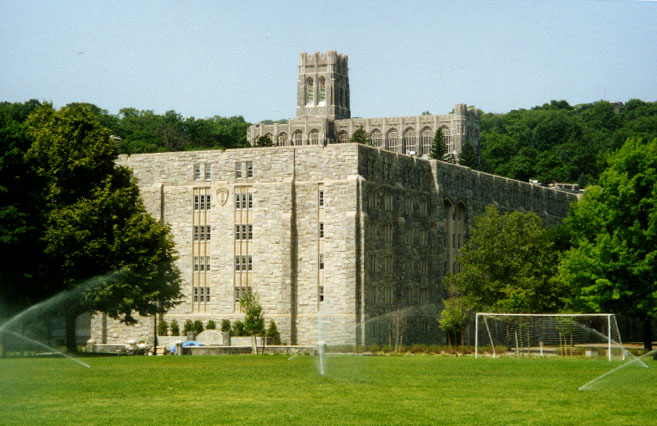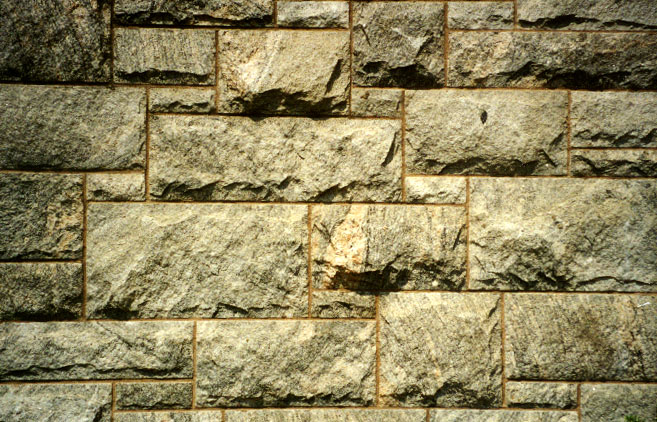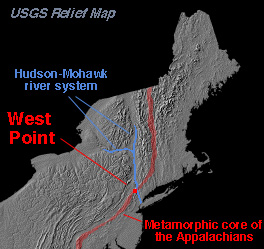



|
|
Many of the buildings and retaining walls at the U.S. Military Academy in West Point, New York, are made of gneiss. Washington Hall at the United States Military Academy is built of gneiss (see below), a metamorphic rock typically resulting from intense metamorphism, often during mountain-building events. Metamorphic rocks form a belt of outcrop in the Appalachians from the Piedmont of the southeast to New England, and West Point sits at one of the narrowest segments of that metamorphic belt. The Appalachians have a long history of metamorphism and deformation, with the most recent event about 300 million years ago. Today gneisses like that below provide the building stone for Washington Hall, which is shown above, with the Chapel behind it and up the hill.
|

|
| West Point also sits where the Hudson River cuts through the Appalachian metamorphic belt, so that the uplands of erosion-resistant metamorphic rocks provide commanding views of a key waterway connecting the American interior with the Atlantic coast (see map below). That's why West Point was a key fortress in the American Revolution, and why Benedict Arnold's plan to turn the fortress over to the British in 1780 would have dealt a serious blow to American military strategy. After the revolution, the fortress on the metamorphic heights over the Hudson became the military academy for which West Point is famous today. |

|
Back to the Index for these pages